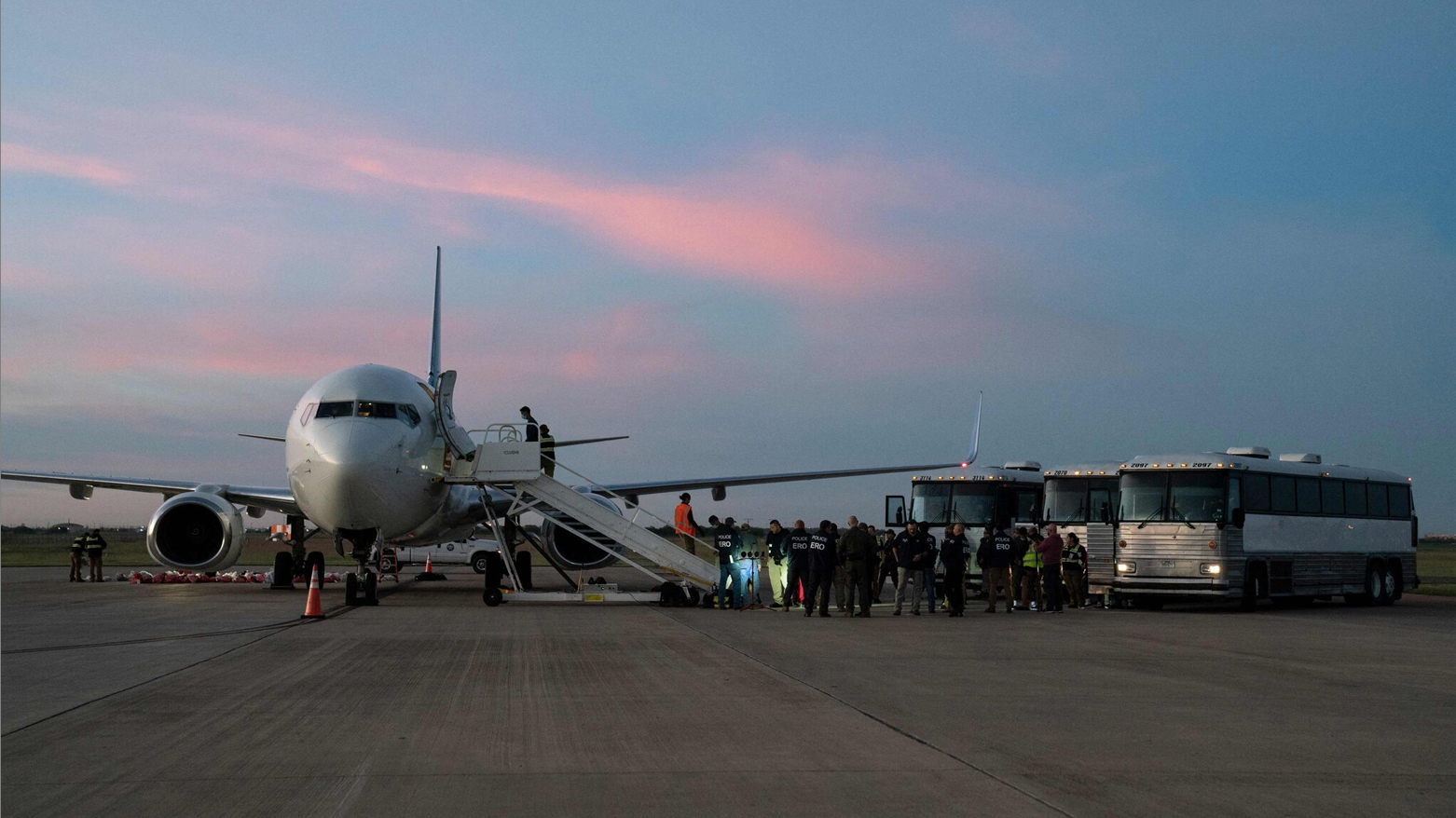US Deports Planeload of Iranians in Rare Cooperation with Tehran: NYT
The New York Times reports the Trump administration deported about 100 Iranians on a chartered flight after a rare deal with Tehran. The move, a stark policy shift, has raised significant human rights concerns as deportees are returned to a country known for persecution and a deep economic crisis.

ERBIL (Kurdistan24) - In a significant and rare moment of cooperation between two adversarial nations, the Trump administration has deported a planeload of approximately 100 Iranians back to Iran following a deal between the United States and Tehran, The New York Times (NYT) reported on Tuesday. The move represents one of the most stark applications yet of the administration's hardline immigration policies, sending migrants to a country with one of the world's most severe human rights records.
The New York Times cited two senior Iranian officials involved in the negotiations and a U.S. official with knowledge of the plans, all of whom spoke on the condition of anonymity as they were not authorized to discuss the matter publicly. The U.S.-chartered flight reportedly departed from Louisiana on Monday night and was scheduled to arrive in Iran via Qatar on Tuesday, marking a dramatic escalation in a deportation campaign that has drawn sharp criticism and legal challenges from immigrant advocates.
This direct deportation flight to Iran is a notable departure from decades of American policy, which had often provided shelter to individuals fleeing persecution from the Islamic Republic. According to The New York Times, the United States has historically hesitated or faced significant logistical hurdles in deporting migrants to Iran due to the lack of regularized diplomatic relations and the difficulty in obtaining necessary travel documents in a timely manner.
This impasse frequently forced American authorities to either detain migrants for extended periods or release them into the United States. While the U.S. deported just over two dozen Iranians to their home country in 2024—the highest number in years—those deportations were carried out over the course of several commercial flights. The current operation, involving a single chartered plane carrying around 100 people, signals a major shift in both capability and political will.
The identities of the Iranians on the flight and the specific reasons they sought to immigrate to the United States were not immediately clear, The New York Times reported. However, the newspaper noted a trend in recent years of an increasing number of Iranian migrants arriving at the southern U.S. border and crossing illegally.
Many of these individuals have claimed they feared persecution in Iran due to their political and religious beliefs. The senior Iranian officials who spoke to The New York Times provided some details about the group, stating that the deportees included men and women, with some being couples.
They revealed that while some individuals had volunteered to leave after spending months in detention centers, others had not. Crucially, the officials stated that in nearly every case, the individuals' asylum requests had been denied, or they had not yet been granted a hearing before an immigration judge to plead their asylum case.
The deportation has been facilitated by months of discussions between the two governments, a remarkable development given their deeply hostile relationship. One of the Iranian officials told The New York Times that Iran’s foreign ministry was coordinating the return of the deportees.
This official added that the individuals had been given reassurances from Tehran that they would be safe and would not face any problems upon their arrival. Despite these official assurances, the source acknowledged that many of the deportees were disappointed, and some were even frightened about their return.
The human rights situation in Iran remains dire, a fact that has long underpinned the United States' reluctance to carry out such deportations. The country is known for its persecution of women’s rights activists, political dissidents, journalists, lawyers, religious minorities, and members of the L.G.B.T.Q. community, among others.
This action is part of a broader, expanding deportation campaign by the Trump administration that has tested legal and humanitarian boundaries. The New York Times pointed out that earlier this year, the U.S. deported a group of Iranians, many of whom were converts to Christianity who face severe persecution in Iran, to third countries such as Costa Rica and Panama.
These and other actions have sparked lawsuits from immigrant advocacy groups who have vehemently criticized the deportation flights, arguing they place vulnerable individuals in grave danger. The latest flight directly to Iran brings these concerns into even sharper focus, sending a clear message about the administration's determination to remove migrants regardless of the conditions they may face in their home countries.
This policy was underscored by President Trump himself in an address to the United Nations General Assembly last week, where he insisted that the United States would double down on its efforts to carry out mass deportations of migrants.
The individuals being returned to Iran are not only facing potential political and social persecution but are also being sent into a nation grappling with a profound economic and energy crisis. The New York Times article paints a grim picture of the domestic situation, describing a plunging currency, sky-high inflation, widespread unemployment, and debilitating water and power cuts.
This dire economic reality is expected to deteriorate further with the return of United Nations Security Council sanctions, which officially went back into effect on Saturday. For the deportees, this means returning to a country with severely limited opportunities and a collapsing infrastructure, in addition to the ever-present threat of state repression.
The rare collaboration on this deportation flight stands in stark contrast to the otherwise acrimonious relationship between Washington and Tehran, raising complex questions about the nature of the deal and the motivations of both governments in facilitating this unprecedented return.